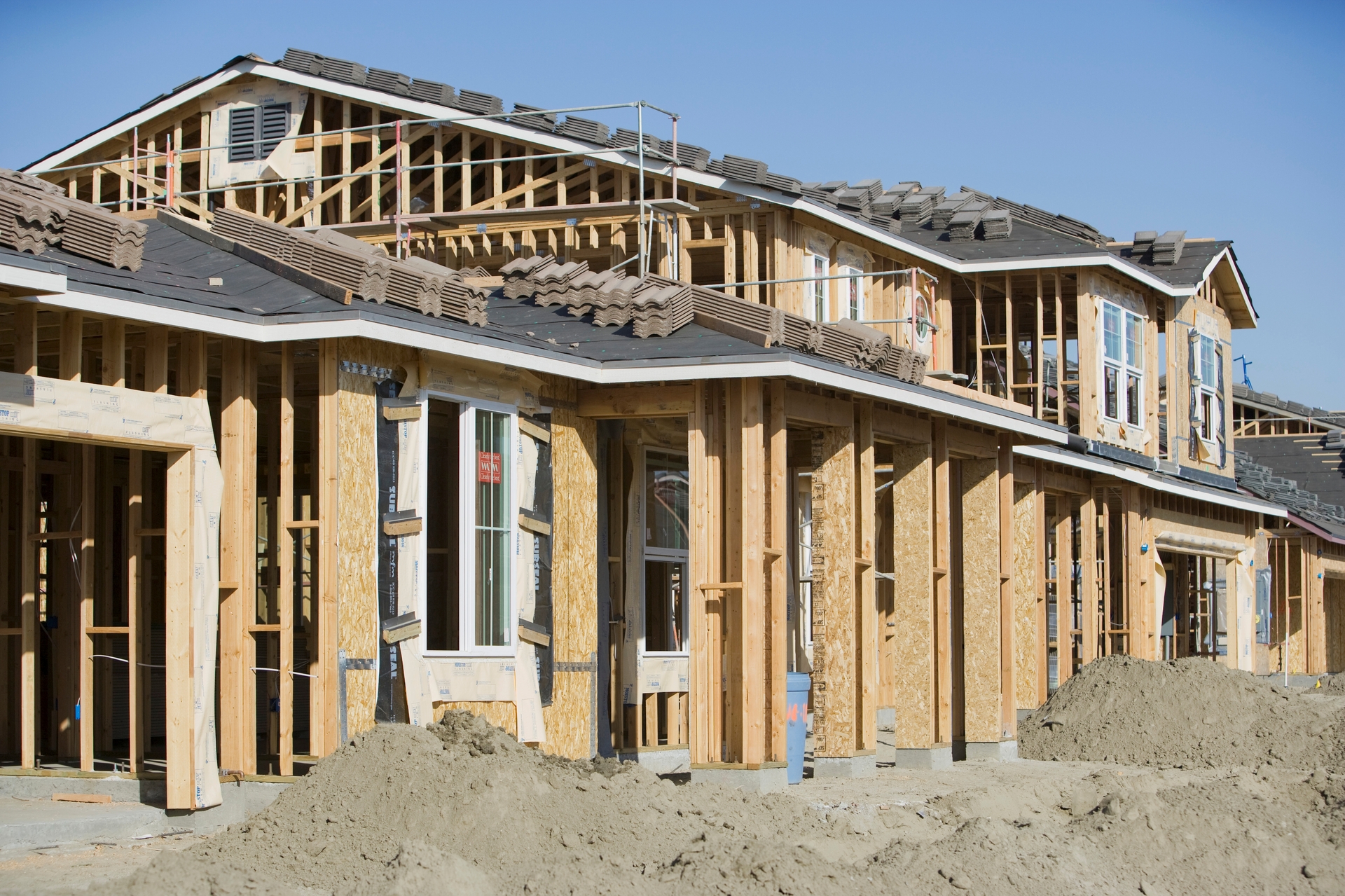When it comes to buying a home, one of the first decisions you’ll face is whether to purchase a newly built home or an existing one. For LGBTQ homebuyers, this decision goes beyond just personal preference; it can also involve considerations around affordability, accessibility, and the specific needs of the LGBTQ community. Whether you’re drawn to the idea of a brand-new house or find the charm of an older home appealing, it’s important to understand the pros and cons of each option.
In this blog, we’ll explore the key differences between new construction homes and existing homes, and how these factors can impact LGBTQ buyers. With insights tailored to the community’s unique needs, we’ll help you make an informed decision that suits both your lifestyle and your budget. Special thanks to GayRealEstate.com for providing ongoing support and resources for LGBTQ homebuyers.
What’s the Difference Between New Construction and Existing Homes?
Before diving into the pros and cons, let’s first define what we mean by new construction versus existing homes:
- New Construction Homes: These are homes that have just been built, and you’re often the first to live in them. They are typically built by a developer or builder and are often part of a new development or neighborhood.
- Existing Homes: These are homes that have been lived in before. They can range from older homes to relatively new properties that have been previously owned, but they’re not brand new constructions.
The Pros and Cons of New Construction Homes for LGBTQ Homebuyers
Pros:
Modern Features and Customization
One of the biggest draws of new construction homes is that they come with modern features and designs. From energy-efficient appliances to updated technology like smart home systems, new construction homes are often built with the latest trends in mind. For LGBTQ homebuyers who may be looking for energy efficiency or an eco-friendly lifestyle, new homes can provide a more sustainable option with minimal effort on your part.
Additionally, many builders offer the opportunity to customize certain features of your home, such as floor plans, finishes, and even layout. For LGBTQ couples or families, this customization can be especially valuable when you’re looking for specific needs, like extra bedrooms or accessible bathrooms.
Less Maintenance and Repairs
Since everything in a new construction home is fresh, you can expect fewer repairs and maintenance costs in the early years. No worrying about an aging roof, outdated plumbing, or old appliances. For LGBTQ homebuyers who may be stretched thin with financial responsibilities, especially if you’re managing student loans or other debts, this peace of mind can be especially comforting. New homes often come with warranties that can cover the costs of repairs for a period of time.
Built-in Community and Amenities
New neighborhoods or developments often include community amenities like parks, pools, gyms, or walking trails. This can be especially attractive for LGBTQ individuals or couples who want to live in a supportive and inclusive environment where they can meet neighbors and engage with their community. New developments are often built with modern, communal living in mind.
Cons:
Higher Cost
New construction homes often come at a premium compared to existing homes. The costs of purchasing a new home can be significantly higher, especially if you’re looking in high-demand areas. For LGBTQ buyers, this can be a barrier if you’re working with a smaller budget or need to make a larger down payment. Additionally, new developments are often in more suburban areas, which may not be ideal for everyone, especially LGBTQ individuals who prefer urban or more diverse areas.
Potential for Construction Delays
If you’re buying a home that hasn’t been completed yet, there may be delays due to weather, labor shortages, or unforeseen construction issues. This can be frustrating if you’re on a tight timeline and looking to move in quickly. For LGBTQ buyers who may need specific housing accommodations, these delays can add an extra layer of stress.
Less Character and Charm
While new homes are often sleek and modern, they can sometimes lack the charm and character of older homes. If you’re someone who values unique architectural features or a home with history, a new construction might feel a bit too generic or sterile. Additionally, new communities might take time to develop a sense of belonging, which can be important for LGBTQ individuals looking for a place where they feel at home.
The Pros and Cons of Existing Homes for LGBTQ Homebuyers
Pros:
Lower Cost and More Negotiation Power
Existing homes tend to be more affordable than new construction, especially if you’re willing to consider older properties that may need some work. For LGBTQ homebuyers with tighter budgets or those looking for more flexibility with the purchase price, an existing home could be a better fit. You might even have more room to negotiate the price and ask for seller concessions, such as help with closing costs.
Character, Charm, and Location
Older homes often come with unique architectural details, such as hardwood floors, crown molding, and vintage charm that new homes may lack. Additionally, existing homes are often located in established neighborhoods, close to shops, restaurants, and cultural hubs. For LGBTQ buyers who prefer a vibrant, diverse, and established community, buying an older home in the right location could provide the sense of belonging and connection that new developments might not offer.
Established Neighborhood and Sense of Community
In many cases, existing homes are in established communities, meaning you’ll likely find neighbors who have lived there for years. For LGBTQ homebuyers, a well-established neighborhood can provide a stronger sense of community and stability, where residents know one another and the area has been through its growth and changes.
Cons:
More Maintenance and Repairs
As a trade-off for a lower price, existing homes often require more upkeep. From replacing outdated appliances to fixing plumbing issues or dealing with roof repairs, you may find yourself facing significant maintenance costs. If you’re an LGBTQ couple or individual working within a set budget, the additional expenses could add up quickly.
Less Energy Efficient
Older homes tend to be less energy-efficient than new builds, which could result in higher utility bills. For LGBTQ buyers who are conscious of their environmental impact, upgrading an older home to be more energy-efficient may require significant upfront investment. However, many buyers choose to take on these renovations over time.
Limited Customization
When purchasing an existing home, you’re limited to the design choices made by previous owners. If you have specific tastes or needs—such as needing more bedrooms or a larger kitchen—it might not be possible to find the perfect fit. Additionally, major renovations to adjust the layout or structure can be expensive and time-consuming.
Which Is the Right Choice for LGBTQ Homebuyers?
Ultimately, the decision between new construction and existing homes comes down to your personal preferences, budget, and long-term goals. If you value a modern, low-maintenance home and are willing to pay a premium for the convenience of a newly built property, new construction might be the way to go. However, if you’re looking for a more affordable option with character, an existing home could be a great choice, especially if you’re open to making upgrades and improvements over time.
As an LGBTQ homebuyer, it’s essential to work with an agent who understands your needs and can help guide you to the right choice. GayRealEstate.com specializes in connecting LGBTQ buyers with real estate agents who are not only knowledgeable but also inclusive and supportive of the unique aspects of the LGBTQ community.
The journey to homeownership is a big step, and deciding between new construction and existing homes is one of the first major decisions you’ll make. By weighing the pros and cons of each option and considering your budget, preferences, and lifestyle needs, you can find the home that’s right for you. Remember, whether you choose a brand-new property or a charming existing home, the key is finding a place where you can feel comfortable, supported, and truly at home.
This article is brought to you by GayRealEstate.com, a trusted resource for LGBTQ homebuyers.



